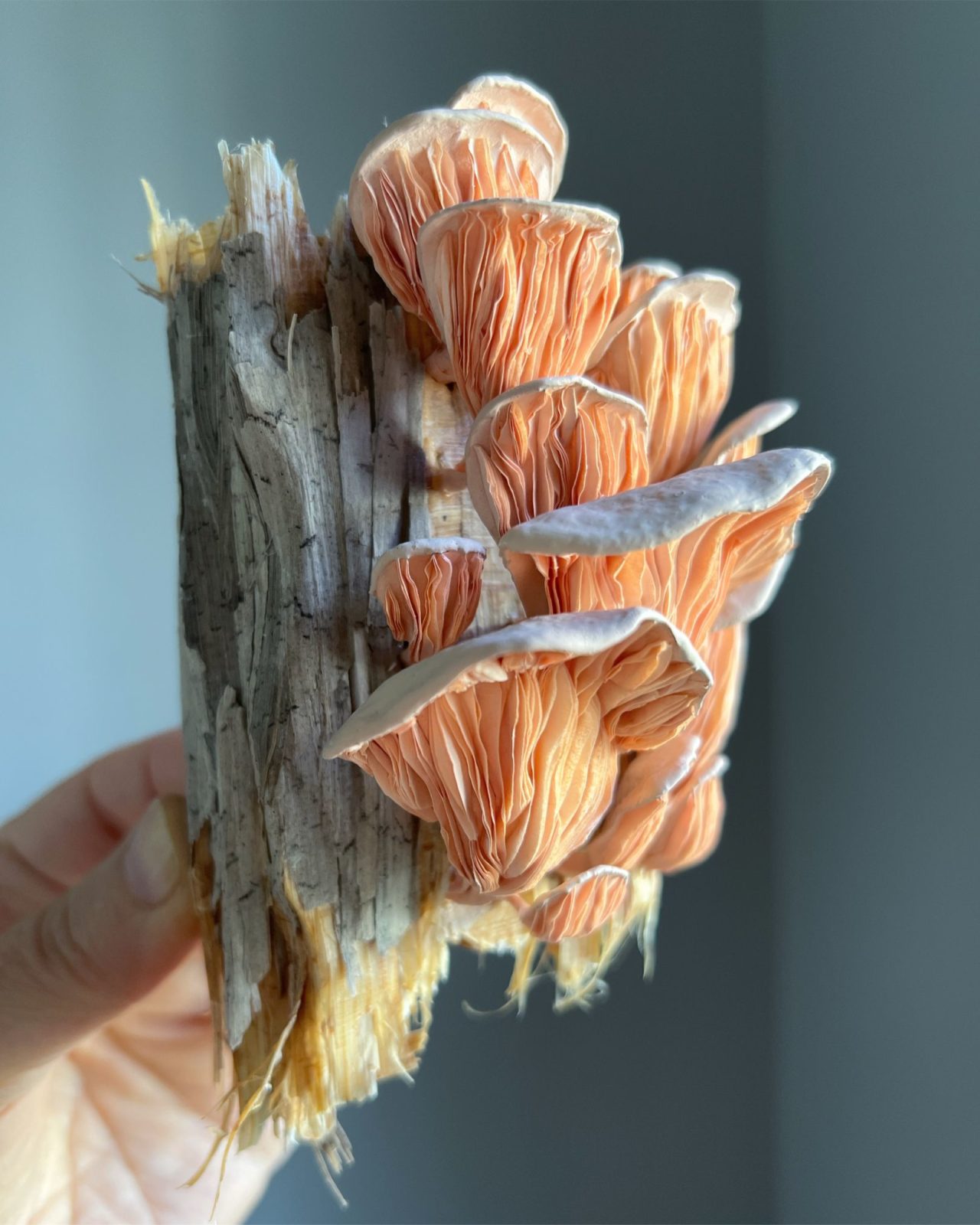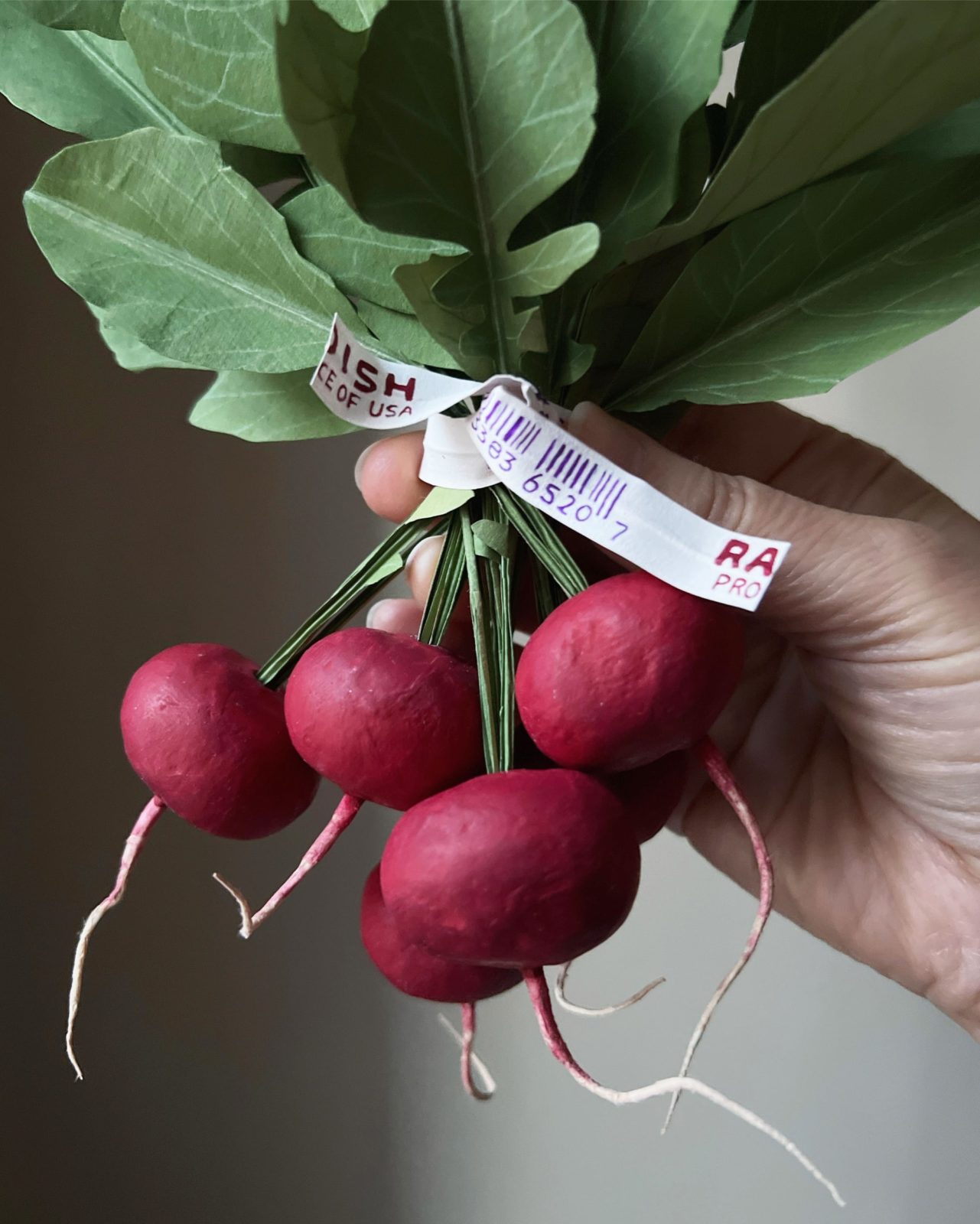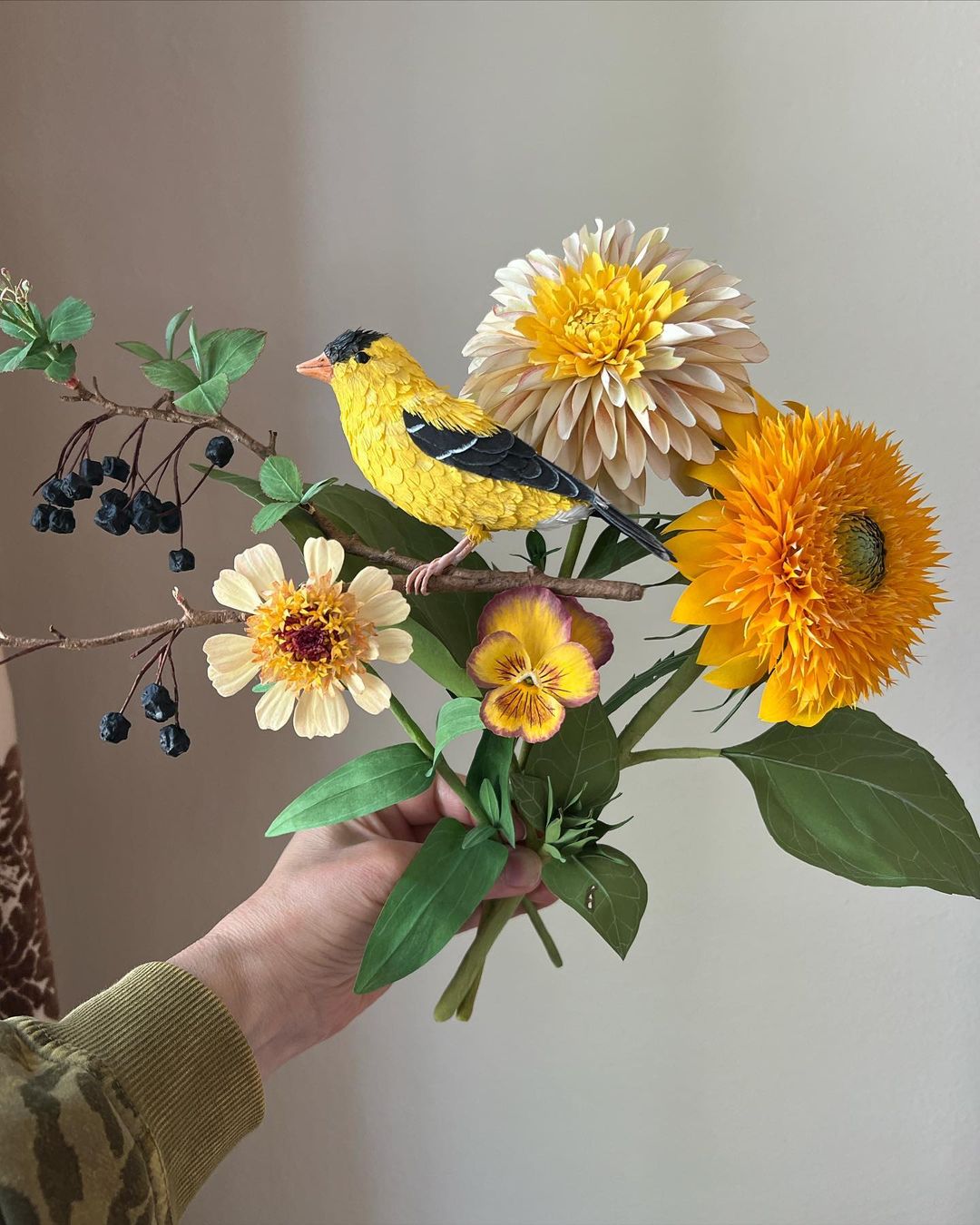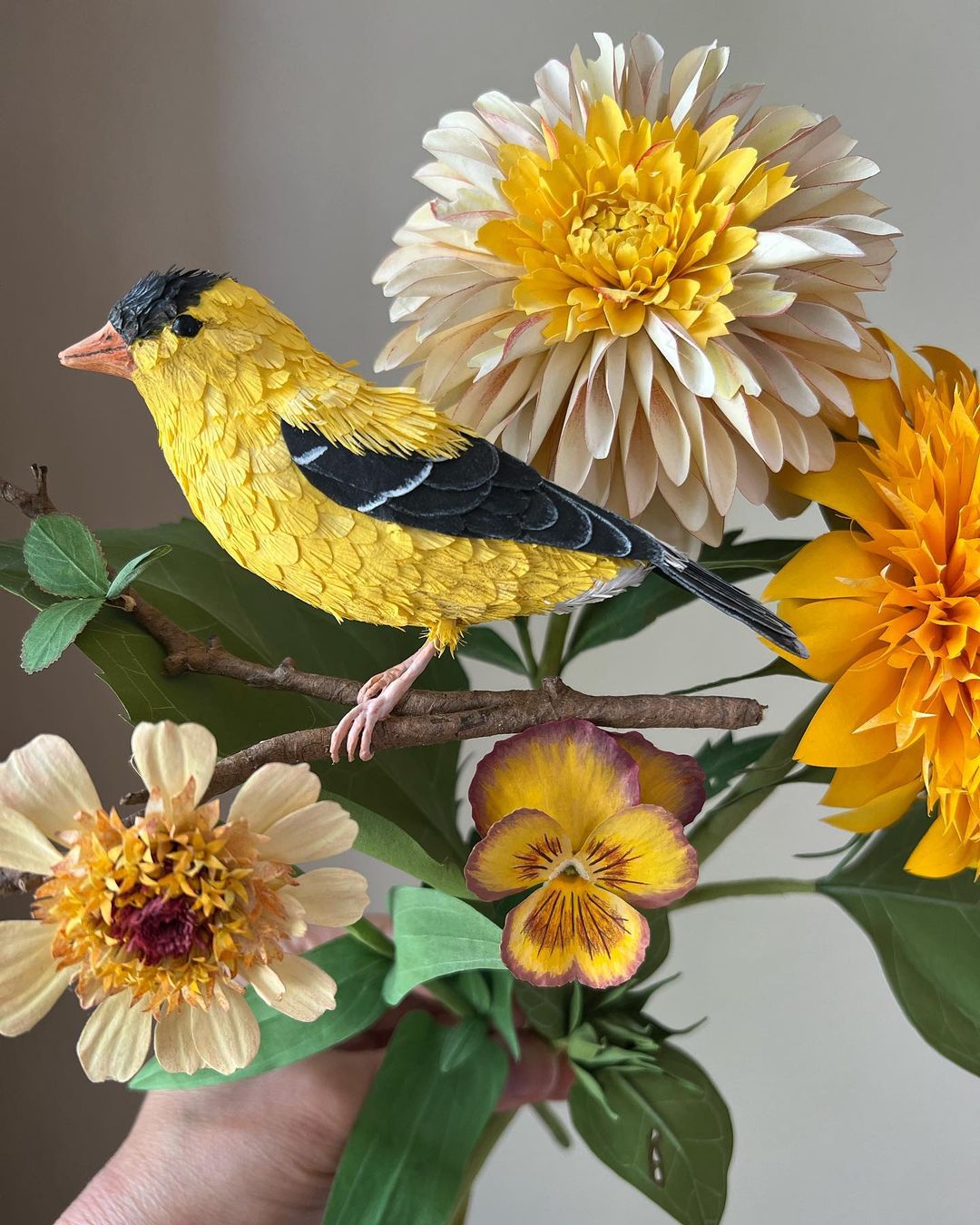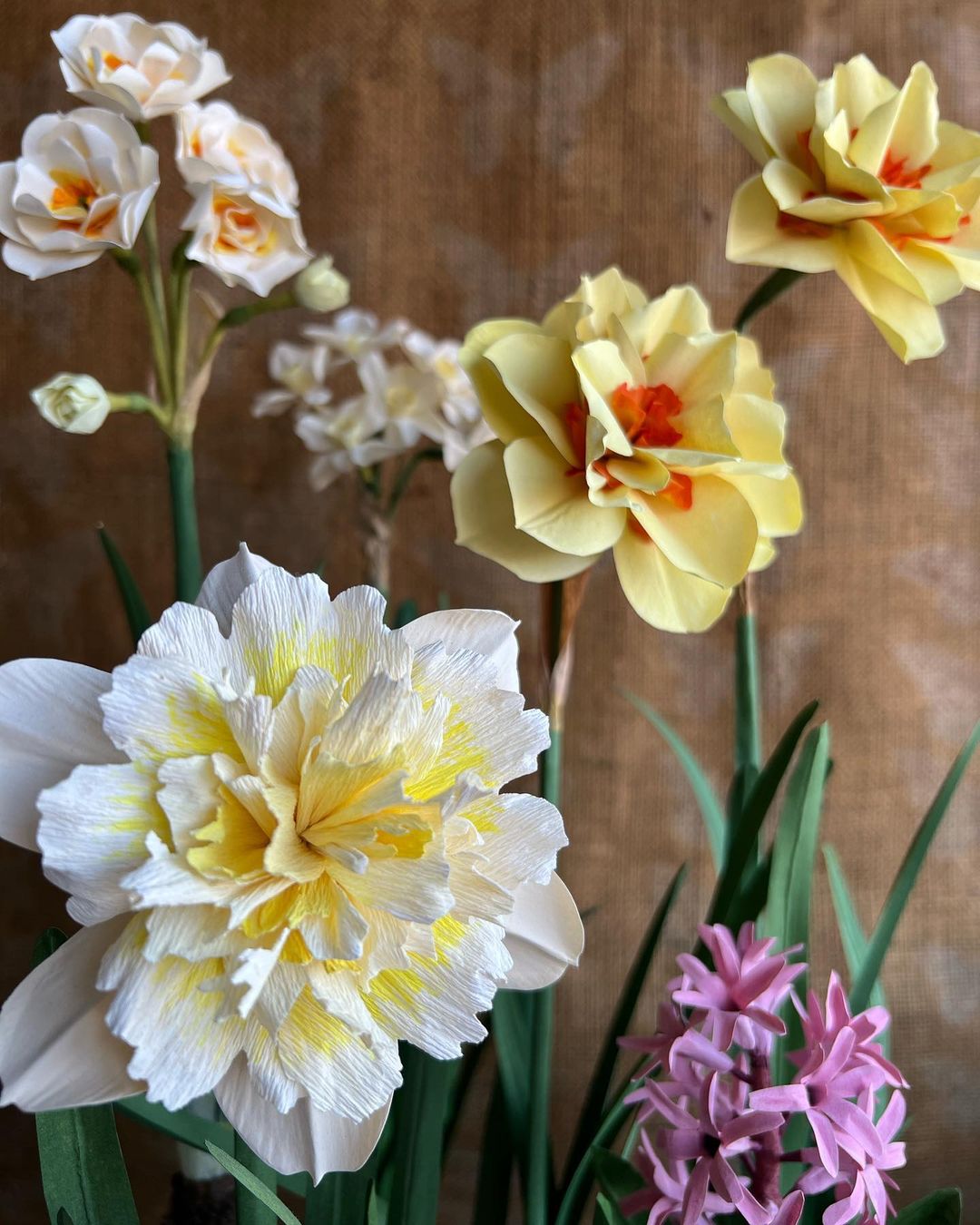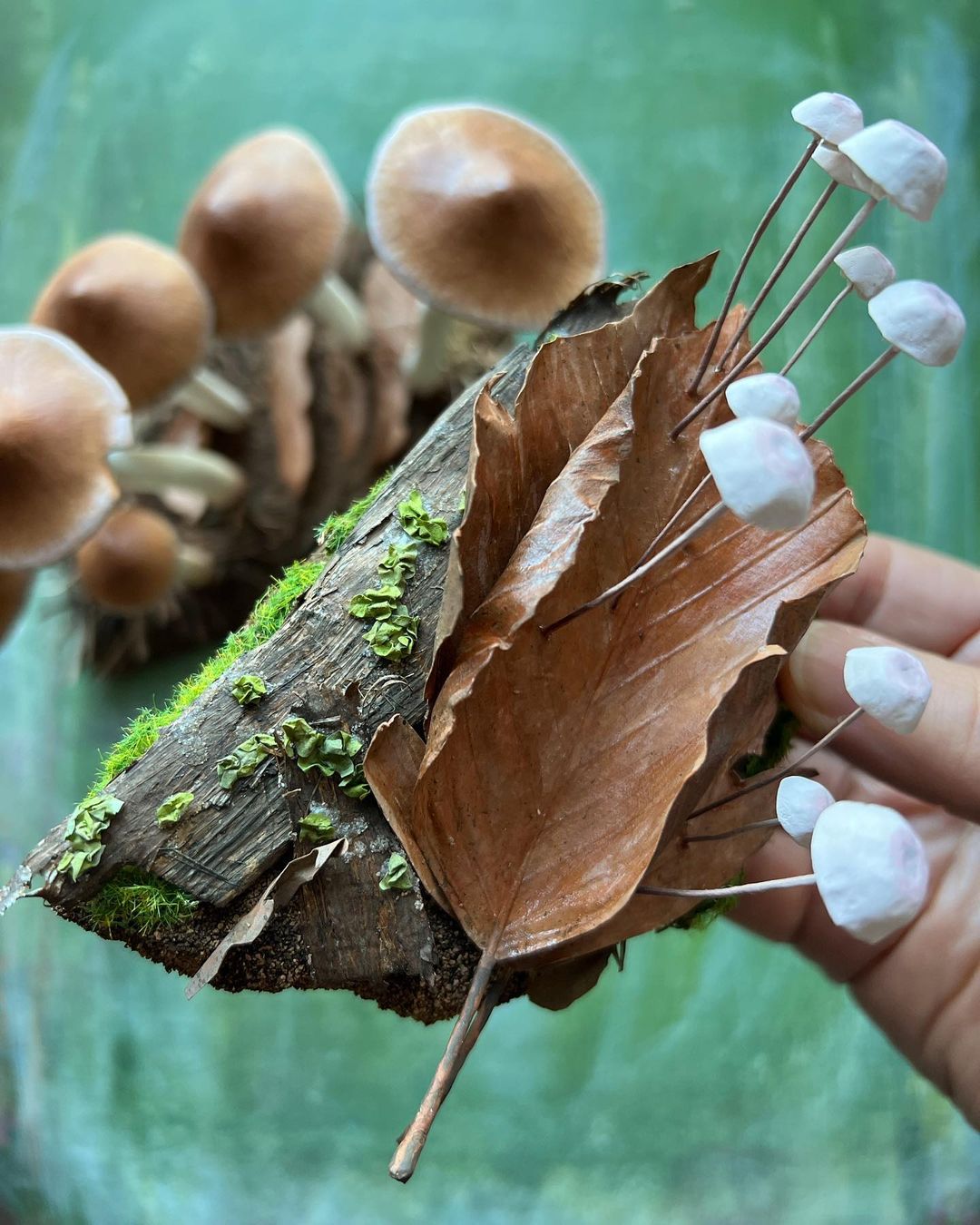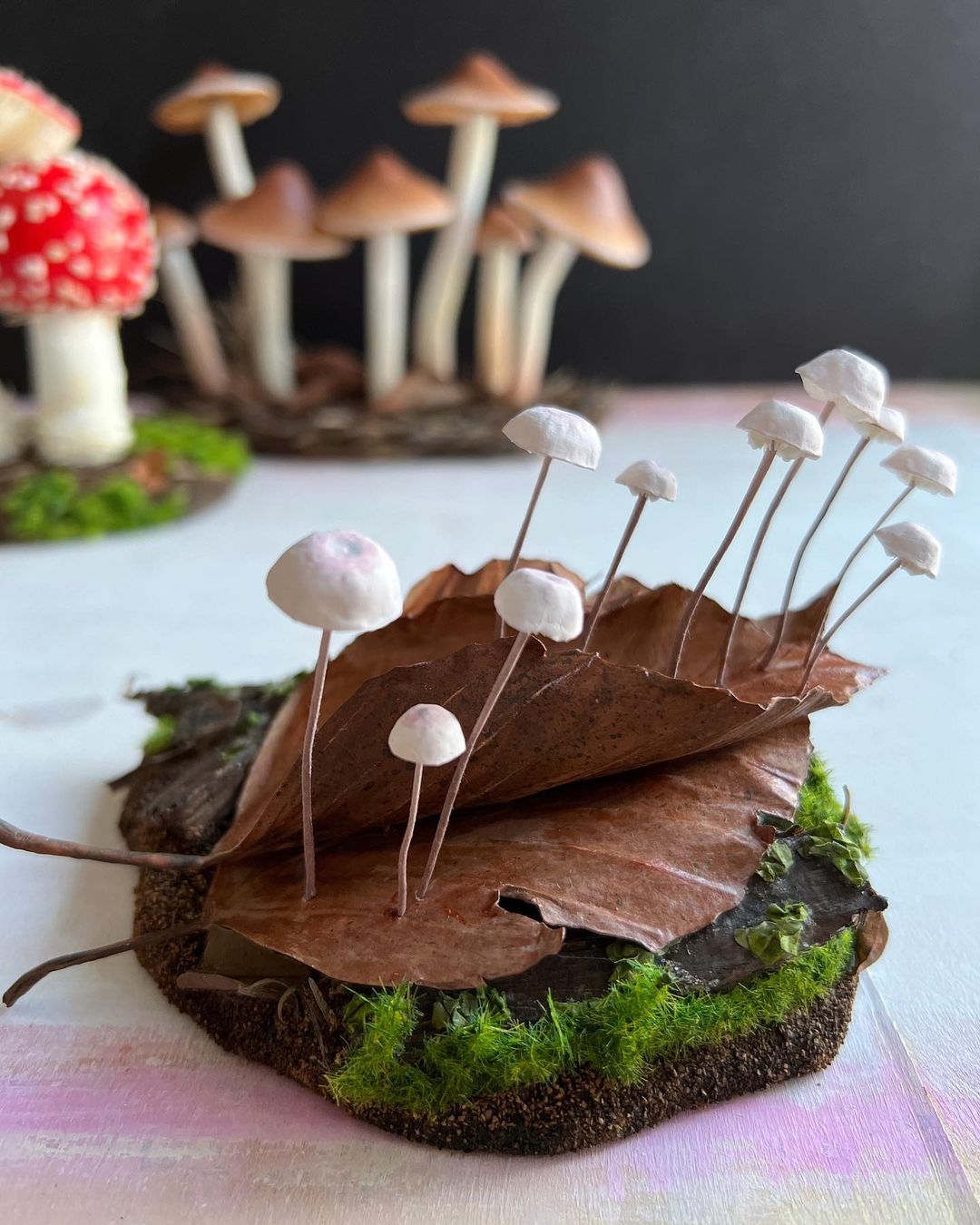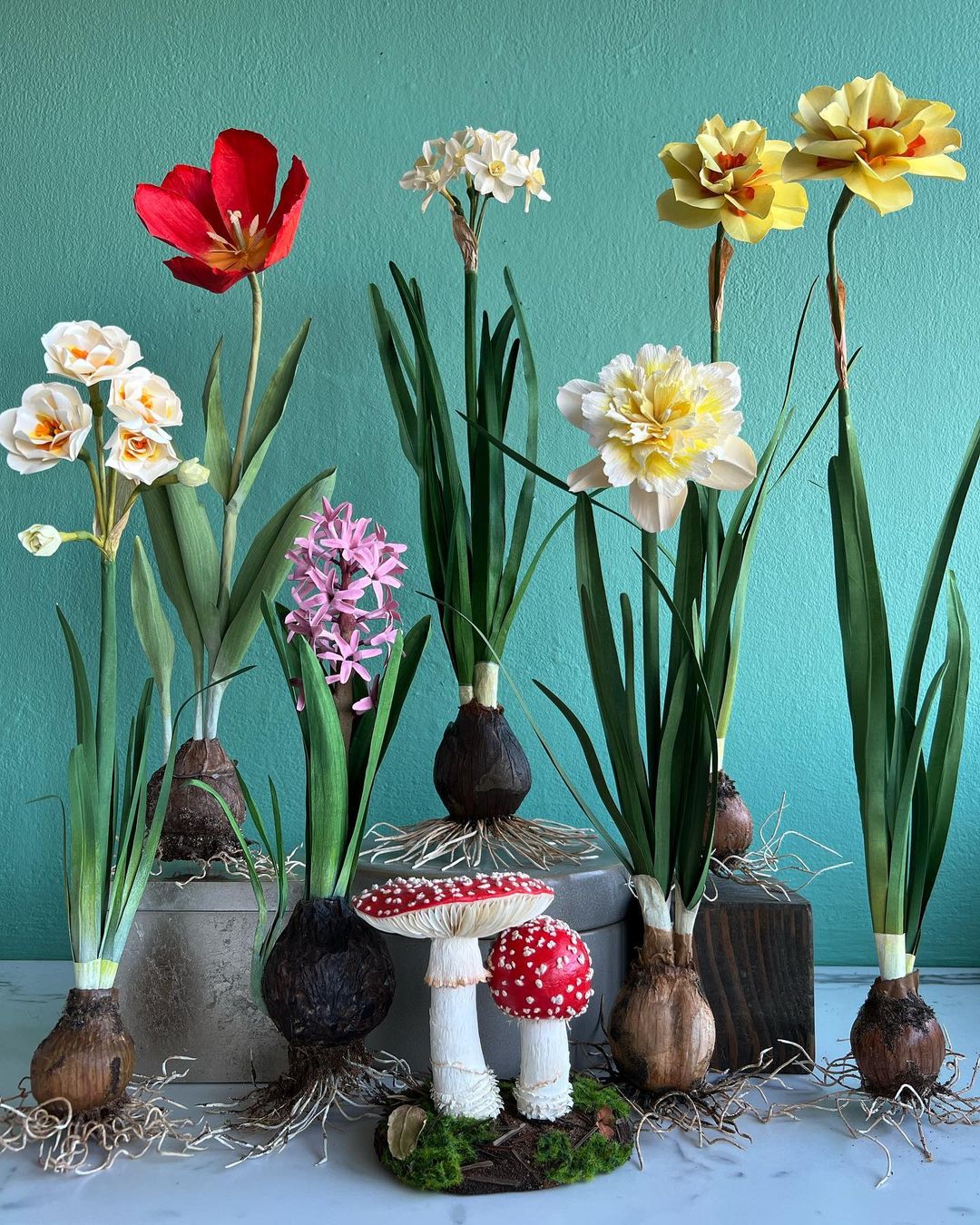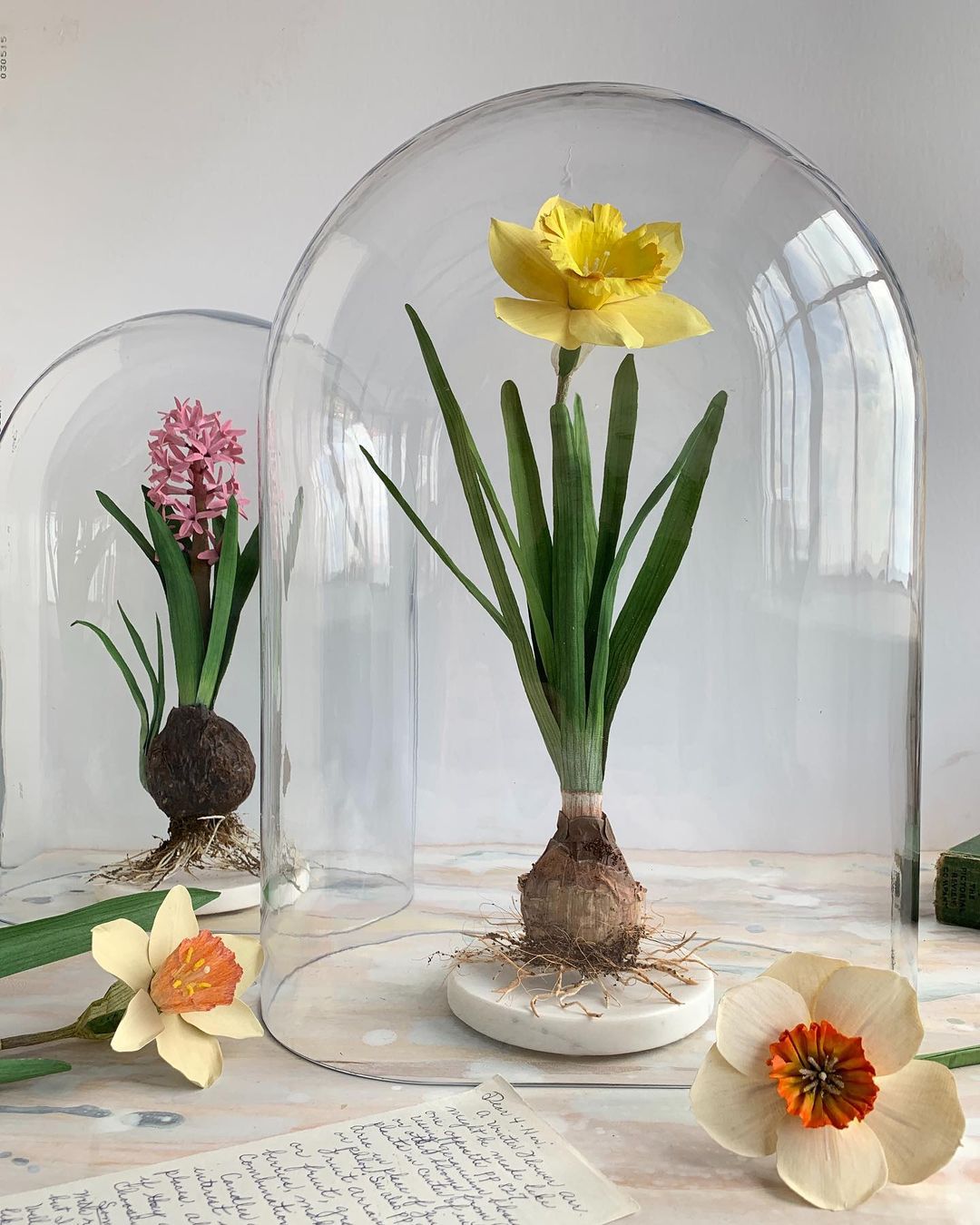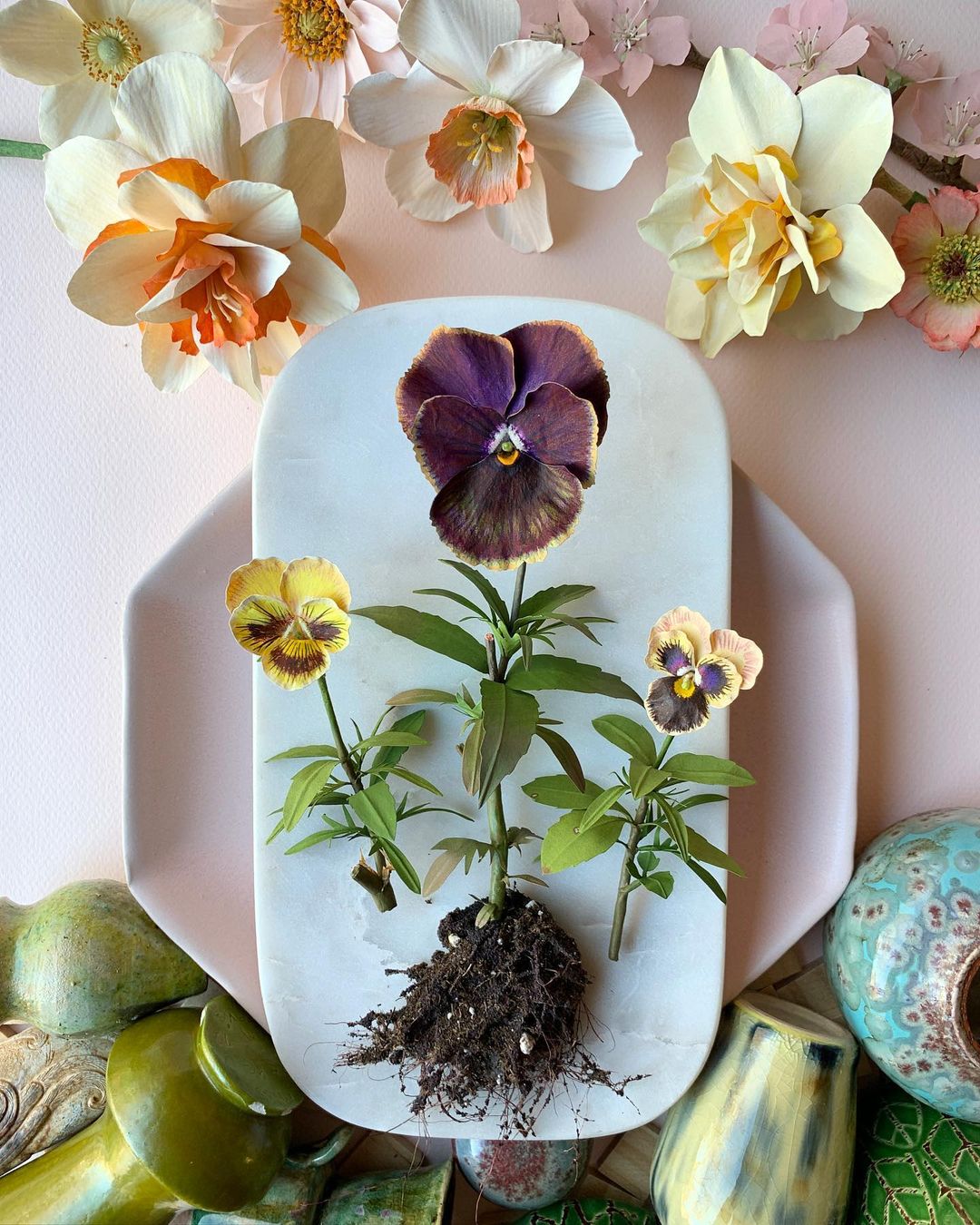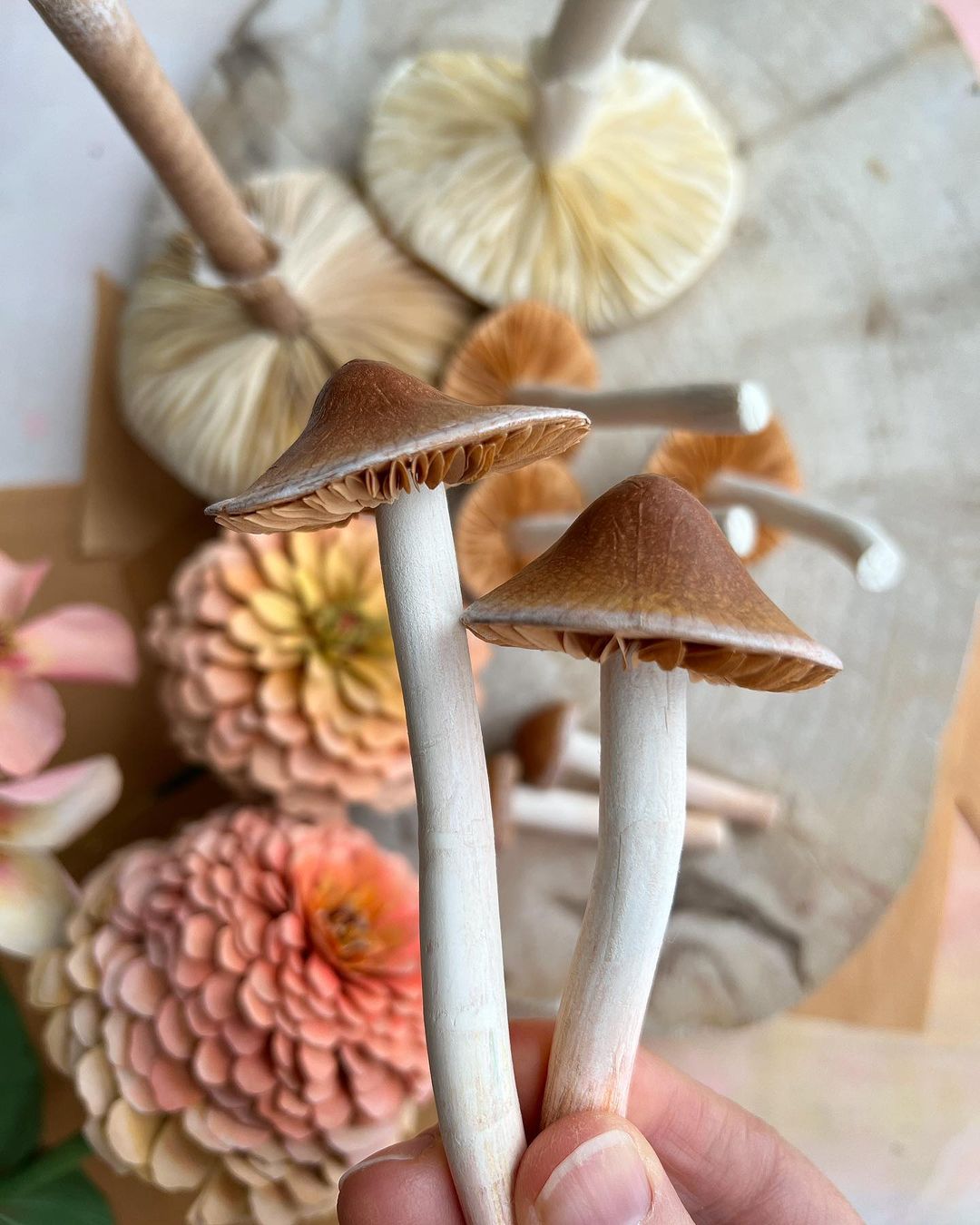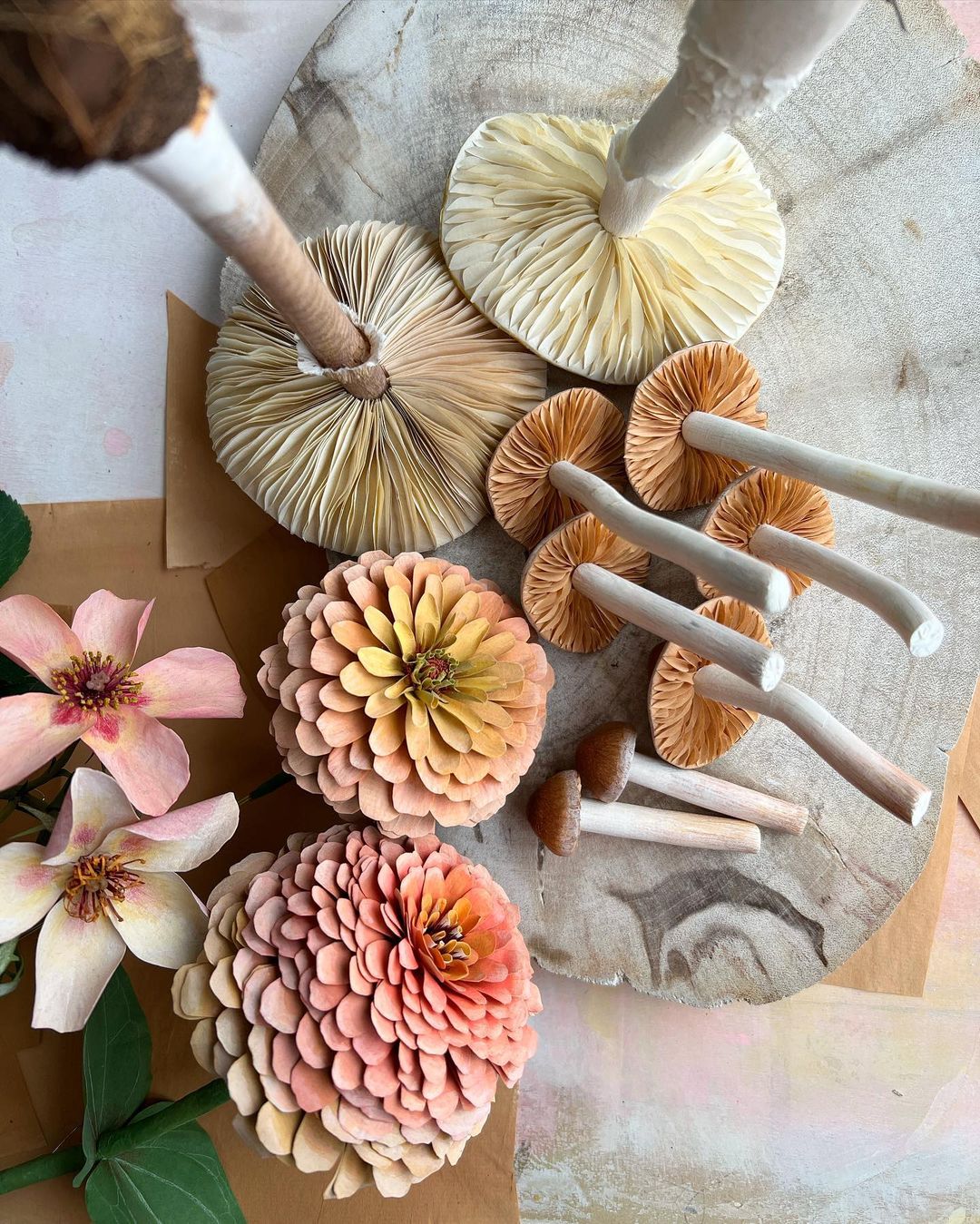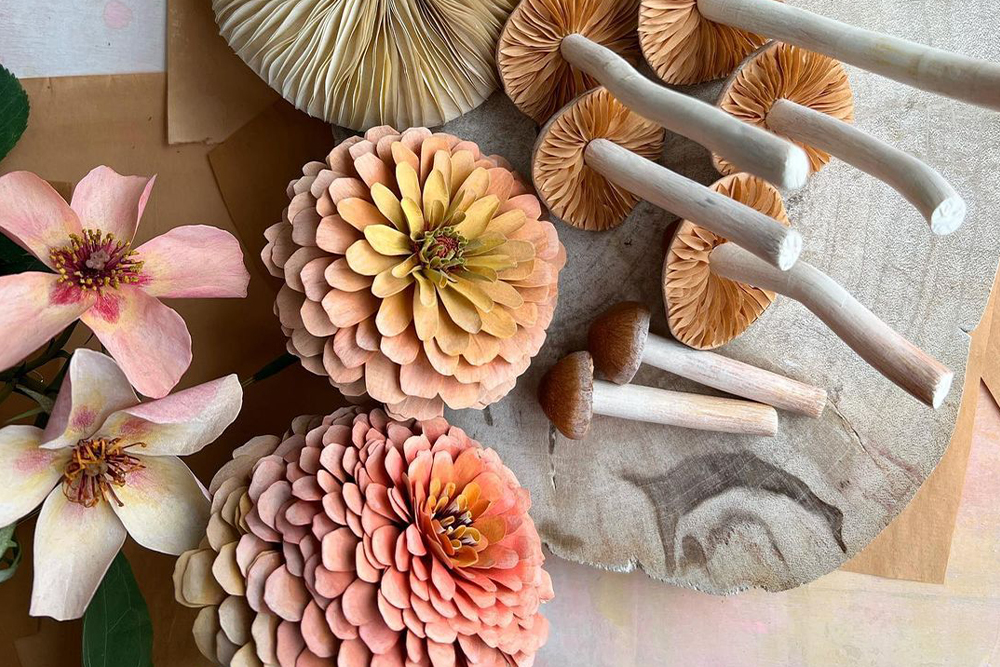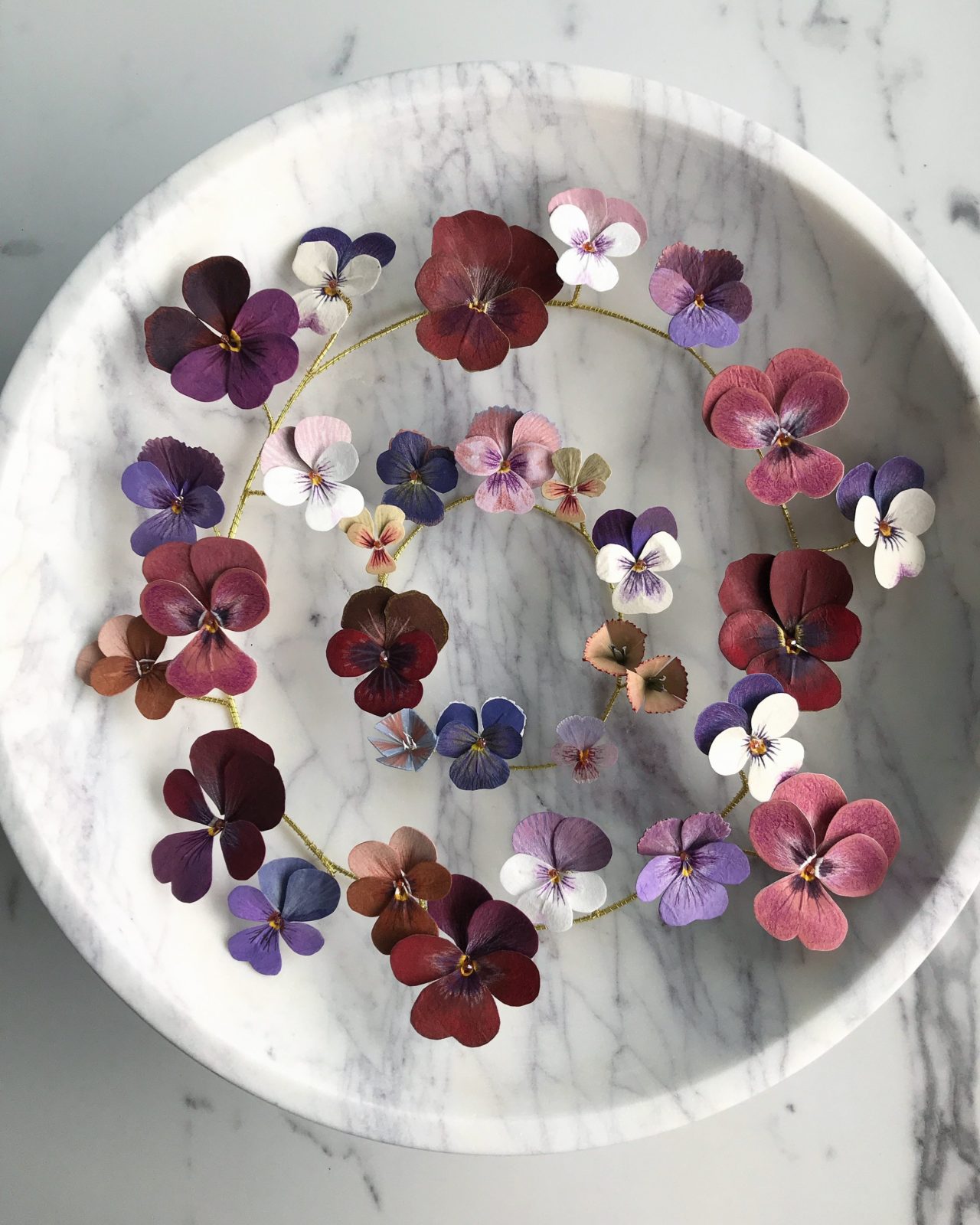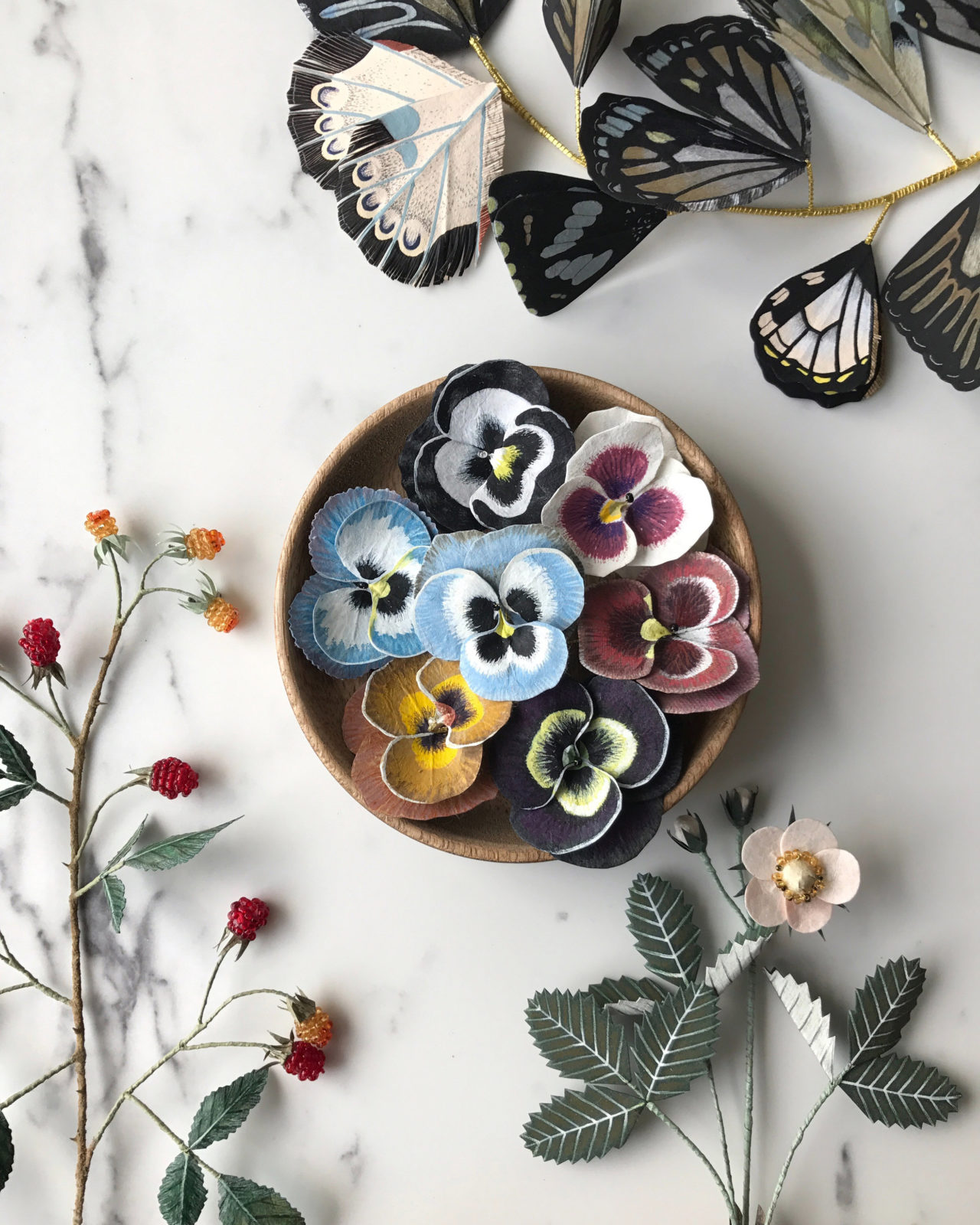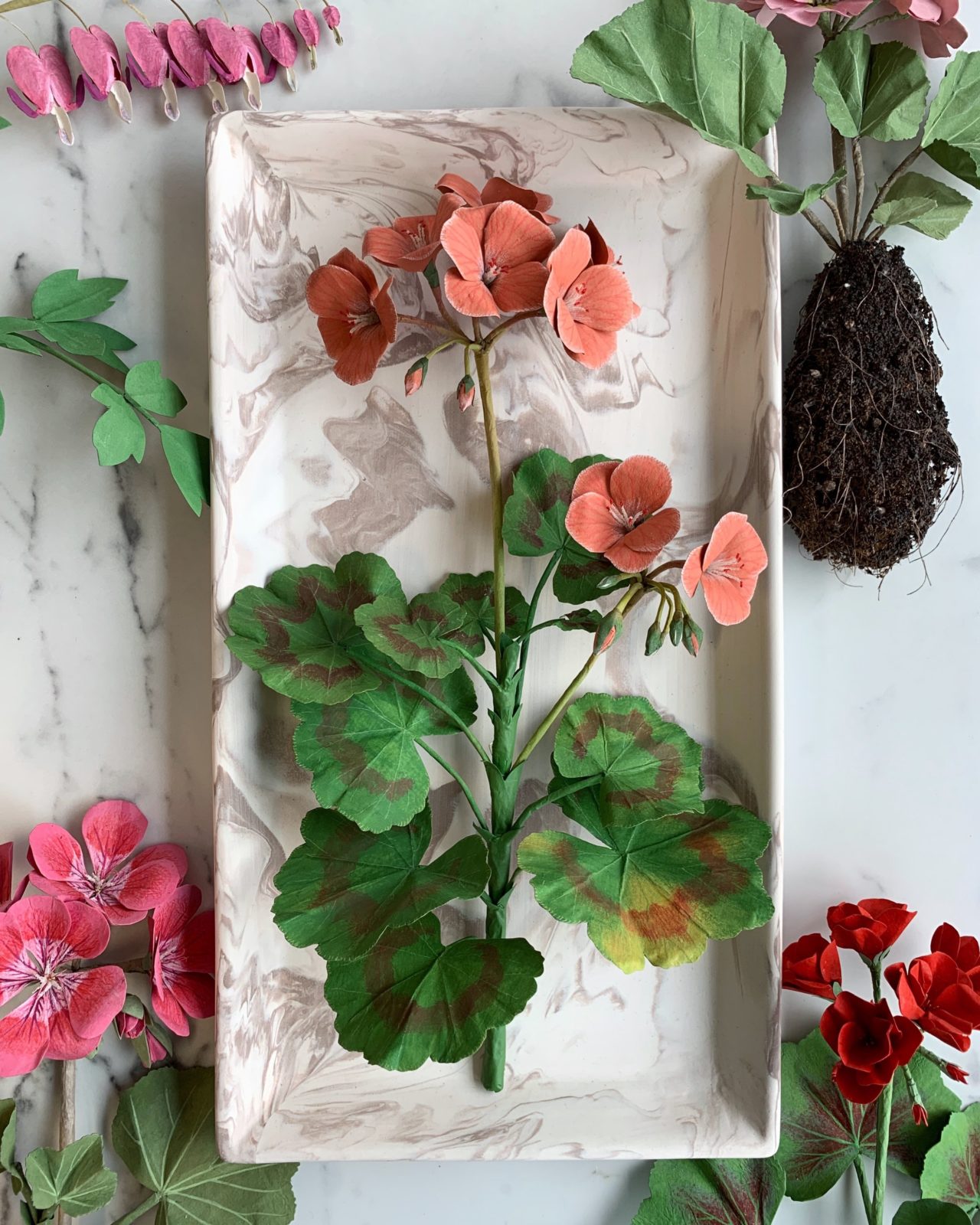Ann Wood is one-half of the creative visual partnership Woodlucker, which she founded back in 1987 with animator Dean Lucker. Based in Minneapolis, USA, Wood works as a paper artist, combining “mixed media portraits and theatrical tableaus of mysterious beauty and solace whose identity is grounded in the timeless aesthetic and ethic of rural America”. Wood has lately become known for her incredibly intricate and life-like paper flowers, foods, insects, plants, and mushrooms, which represent a level of realism that makes you wonder, how exactly does she do it.
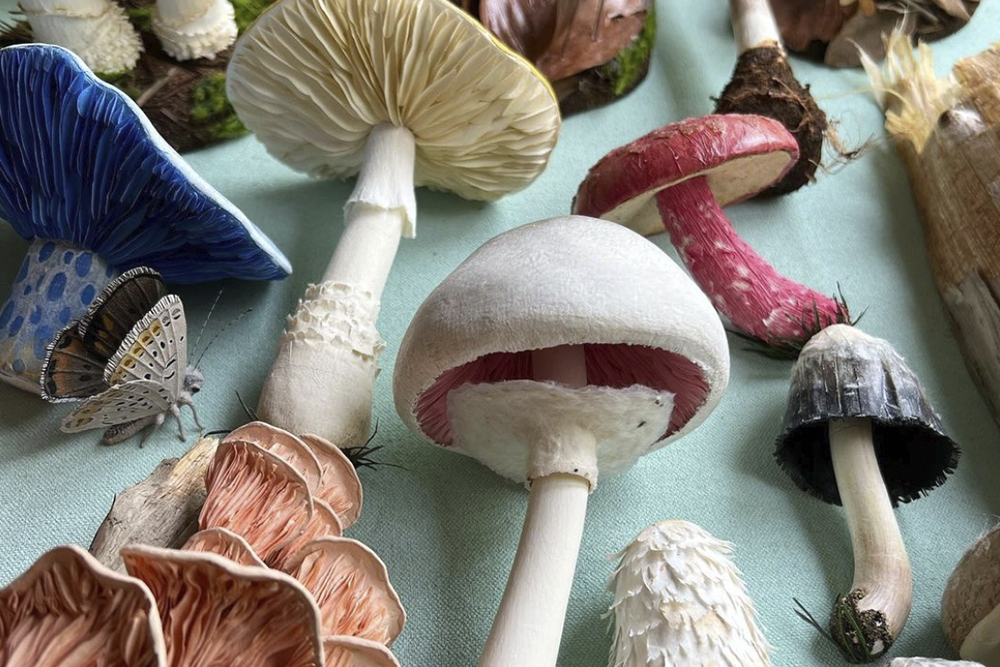
The exquisitely sculpted, realistic paper creations, which are detailed with paint, wax, and colored pencils, are based on plants Wood grows in her own home garden
With a love for “illustrated paper art and the forgotten histories of engaging objects full of sentiment and longing”, Wood’s history of collecting objects has made her observant and delicate to the layers and nuances of their being. Aiming to create the most realistic paper botanicals that she can, Wood even grows most of the plants she creates out of paper in her own garden at her house. Carefully examining the details in the texture and color matching the painted papers to the live plants, Wood recreates nature’s work in such detail that it takes a second glance to realize they’re made from paper.
There’s a certain je ne sais quoi that embodies the work that forces you to give it a second look, that feels familiar and otherwordly at once.
From radiantly pink and juicy bundles of radishes to delicate and fragile daffodils sprouting from their roots, Wood’s work feels effortless and relentlessly intricate at once. There’s a certain je ne sais quoi that embodies the work that forces you to give it a second look, that feels familiar and otherwordly at once. With days or weeks to create, Wood spends a significant amount of time observing the variations of a single bloom or sprout. “All plants are individuals, each with its own uniqueness. Many times it’s the flaws and the blemishes that make a specimen most interesting.”
Enjoy more of Wood’s work on Instagram where she shares not only the finished work but the intricate process, and offers a behind-the-scenes look.
